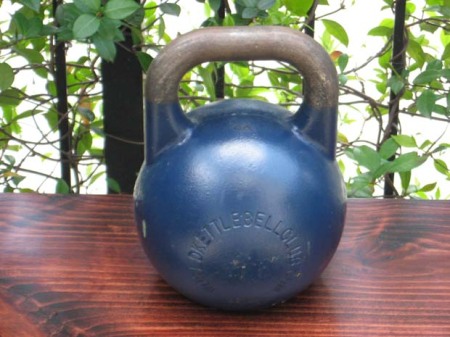I am a bit more than 200 days shy of my 40th birthday. On Thursday, I had a third arthroscopic procedure done on my right knee – the second in 210 days. Fortunately, Thursday’s procedure was not as extensive as the prior repair in August (which healed nicely) and the recovery seems to be on track.
The doctor and I had a long discussion on what caused these two injuries prior to my surgery. I showed him the movements of the snatch, swing, jerk, and the way I squat and much to my surprise he is adamant that nothing I am doing caused either of my meniscus tears. He does not believe there is a pattern or underlying cause to either of these injuries, and his examination of the inside of my knee surprisingly yielded “a very healthy looking knee.” I have no arthritis or other deterioration of concern.
His explanation for my problems? Possibly a circulation issue of unknown cause in the cartilage, possibly genetic in origin. He called my two injuries a rash of bad luck, and he does not see a readily apparent reason why there would be a recurrence. I have to trust a trained professional who has done thousands of these and is well recommended in the Houston medical community.
Still, I have a lot of questions, and a lot to think about. How do I rehab? How do I prevent this from happening again? Did I come back too fast the last time?
As far as rehab, I am advised that beyond ice and mobility drills, there is no rehab besides taking it easy. In theory, I am told, I could do anything I wanted today and there is no way to re-injure the knee. Of course, I would pay a price in swelling. Discretion is the better part of valor, and this is my knee we are talking about.
Since it is my knee, I am entirely responsible for what I do to it. Naturally, I am going to look more into rehabilitation options and strengthening exercises. Joint mobility, jump stretch bands, maybe even some supplementation.
I am going to assume that I did come back too quickly the last time, and I am going to be quite vigilant as to what I do this time. The best steps I can take right now are ice (to get the residual swelling down) and mobility drills. A period of mobility exercises and non-knee flexing body weight exercises seem to be order. Mobility drills with situps, pushups (with the right leg suspended), kettlebell chair presses, chins, planks, etc. will be my focus. There is no timetable at this point as to moving on to other kettlebell exercises like the swing, snatch, standing press, clean and press, push press, jerk, etc.
My priority is to heal, with a secondary emphasis on maintaining some semblance of condition.
I recently purchased a copy of Scott Sonnon’s Intu-Flow, and have been using his basic class as a mobility program for the last couple of weeks as a run up to surgery. I’d really like to get into his Flowfit program again, but I need healthy knees to practice Flowfit effectively. I will post up a review of Intu-Flow in the next few weeks once I have spent more time with the program. A few weeks or months of primary focus on joint mobility should be beneficial.
I don’t know how to prevent this from happening again, but I am going to reduce the odds. Shutting down all physical activity is not an option for me. Logical preventative measures seem to include joint mobility drills, exercises to strengthen the adjacent muscles, and making sure I am entirely comfortable resuming exercises that require knee flexion before resuming such exercises.
Stay tuned – more to come over time.




